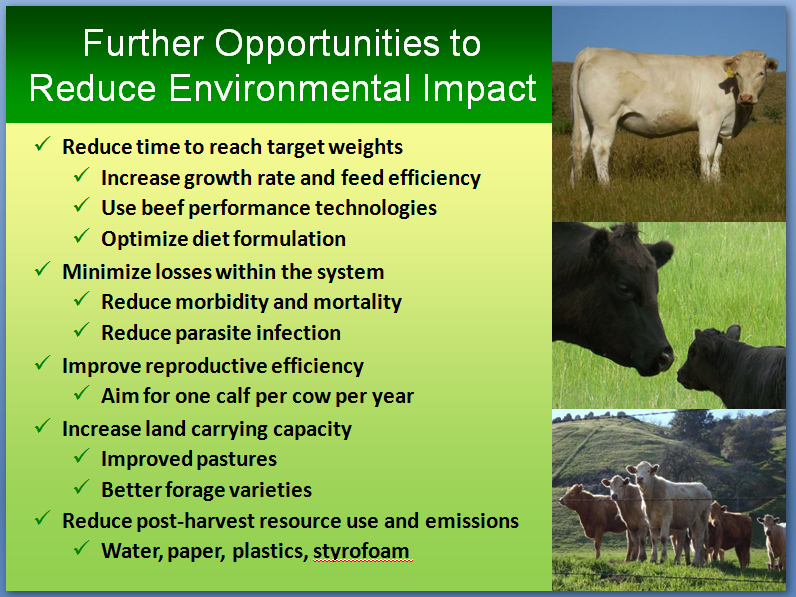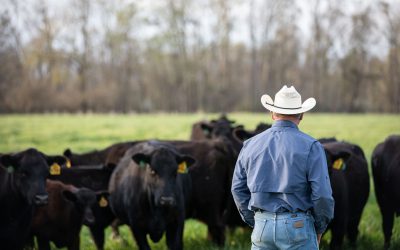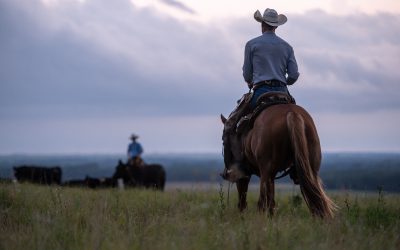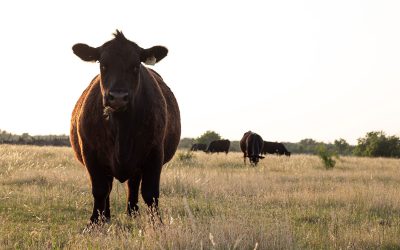
Going green, meeting today’s beef demand
September 27, 2011
You may have heard the buzz… last week was a big one for us at Certified Angus Beef LLC. More than 600 of our closest friends gathered in Sunriver, Oregon for our Annual Conference to celebrate a year of success, from pasture to plate.
Annual Conference is all about honoring our partners – we award our Feedlot Partners of the Year, identify seedstock and commercial producers for their Commitment to Excellence, recognize innovation in retail and foodservice marketing and celebrate those who contributed to selling more than 800 billion pounds of Certified Angus Beef® brand product this year.
“How the Best get Better” is a book that has floated around the CAB office for many years and is often quoted by our team. Taking that mentality to heart, Annual Conference is also a time to learn how to get better. With an audience including everyone from cattle ranchers to executive chefs, Annual Conference has a host of guest speakers and workshops that focus on education, innovation and research that will help our great partners and ourselves improve our personal and professional skills.
One of those speakers was Dr. Jude Capper, an assistant professor at Washington State University. Dr. Capper’s presentation created a lot of great discussions at Annual Conference and amongst our Twitter followers, so I thought I’d share a few highlights:
Bigger is better? To an extent: We’ve increased beef yield/animal by 31% from 1977 (603 lb) to 2007 (773 lb). If that rate continues, we’d be averaging 892 lb carcasses by 2027. Capper says that won’t work unless there is a complete overhaul of current packing plant equipment, etc. They literally can’t handle carcasses that size with today’s standard processing systems. “But what we can do is improve productivity and improve growth rate. That equals a lower carbon footprint,less water use,land use, etc.”
This ain’t grandpa’s beef system: In 1977, it took 5 animals to produce the same amount of beef that 4 animals produce today. It also takes 19% less feed, 12% less water, 33% less land per unit of beef produced today. Capper says that’s not due to any overly complicated technology: “That’s simply because they’ve been doing what they do best—improve productivity.”
Green is grain fed, too: To convert from conventional, grain-finished beef to an entirely grass-fed system, we’d need to more than double the number of cows in the U.S. today. It would also increase the necessary land use by 131 million acres, with is equal to about 75% of the land area of Texas. Capper says grass-finished beef is a great option that we need to continue to offer to consumers who want that product, but it is scientifically inaccurate to position it as the only way to ‘go green.’ “Every production system has its niche, but we have to market it correctly,” she says.
How to continue to improve: Capper ended her presentation by making a few suggestions on how cattlemen and women can continue to reduce our environmental impact.
The great news is, we can do all these things while keeping carcass quality in mind. Contrary to sometimes popular belief, marbling and efficiency can go hand-in-hand. Here’s what we know what how some of Capper’s suggestions work with consumer satisfaction via marbling:
- Reduce time to reach target weights
The growing Angus advantage
Four ways to marry implants and quality goals - Minimize losses within the system
Angus, health and profitability - Improve reproductive efficiency
Cows that work, calves that grade?
Here was another interesting fact Capper shared: Only 86% of cows have a live calf every year. “If we could improve that to 90%, think of all the efficiency we’d gain,” she pointed out.
Listening to Dr. Capper’s presentation reminded me of an insightful video I recently saw, created by Merck Animal Health’s team. Some more amazing facts about beef and the environment in there. Enjoy!
http://www.youtube.com/watch?v=hZBWBs29QkI
You may also like
Progress from small steps
Every day is a chance to learn and get better. Thousands of others like my new friends in Alabama are taking steps to meet the shifts in consumer demand, and to know more. Small steps in the right direction can start now. Even if it’s just recording a snapshot of where you are today, a benchmark for tomorrow.
Not perfect, but working to get better
The CAB Cattleman Connection team heard its name called more than once in the virtual ceremonies, and each time came a sense of personal accomplishment, but even better: confirmation that we’re getting better at our craft. I hope that means we’re doing a better job for you.
Beefed up findings
Frank Mitloehner presents his findings on the animal ag sector’s impact on global warming. He explains how cattle counterbalance other fossil fuel sectors, proving that cattle are a solution and not a threat.




